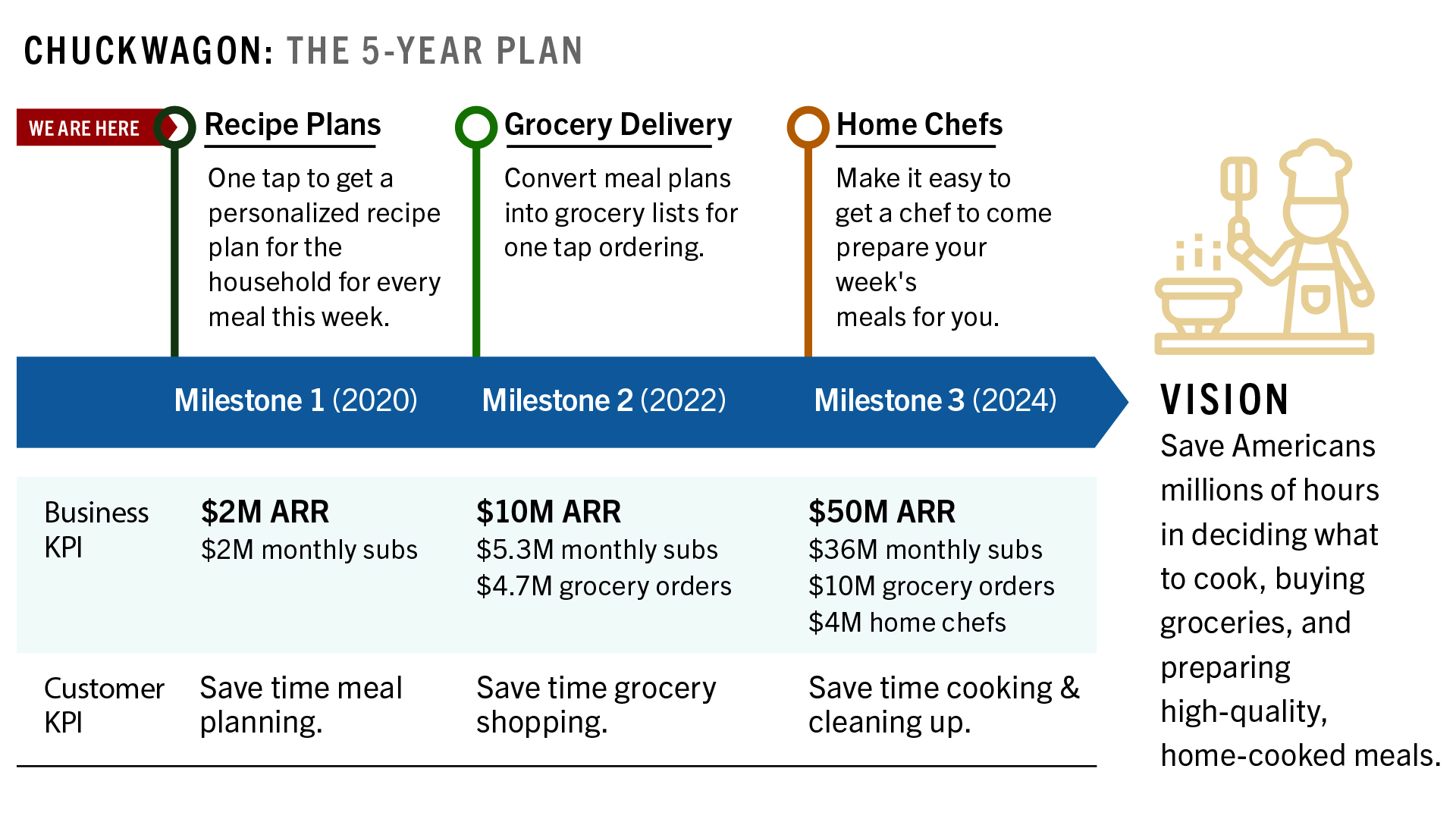To illustrate the concepts of Vision-Led Product Management, we use an imaginary app we call Chuckwagon. Let's take a detailed look at the process of:
- Creating outcome KPI pyramids for both users and Chuckwagon (the company)
- Crafting a customer journey vision to maximize the value delivered to customers
- Working backwards from the customer journey vision to form a strategic plan
Creating Outcome KPI Pyramids
Customer Outcome KPI Pyramid
Chuckwagon is an app to help you get a home-cooked meal onto the table. We always start the process by thinking about what outcome the customer seeks from the product. So how would a customer quantify the value of the product? Some initial ideas for outcome metrics we had:
- Satisfaction with the meals
- Cost of making the meals
- Time required to get the meal on the table
To decide which one to choose, we of course turned to customers. During interviews, customers mentioned that their main frustration with cooking at home was how much time it takes. In general, no matter what app or cookbook they used to decide what to make, they were pretty happy with the meals. And the cost didn't seem to be a huge concern - it was always cheaper than eating out. So we decided that the outcome was to reduce the time spent getting the meal on the table. That breaks out into some subcomponents, like the time spent planning, cooking and cleaning up. We arrived at this pyramid:
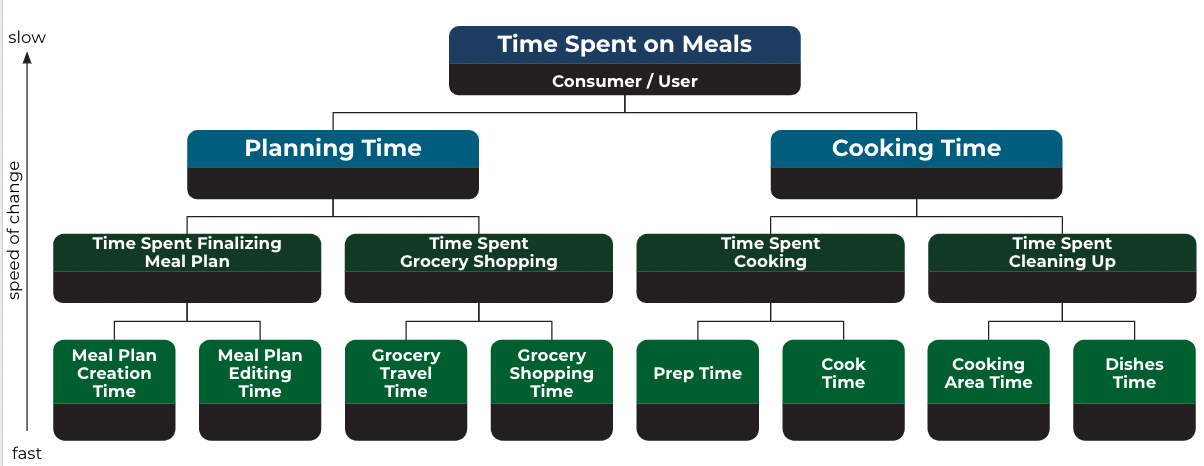
Chuckwagon Outcome KPI Pyramid
The internal outcome is a little easier - it's almost always something with a dollar sign in front of it. In this case, we've chosen Annual Recurring Revenue (ARR) as a typical SaaS product success metric:
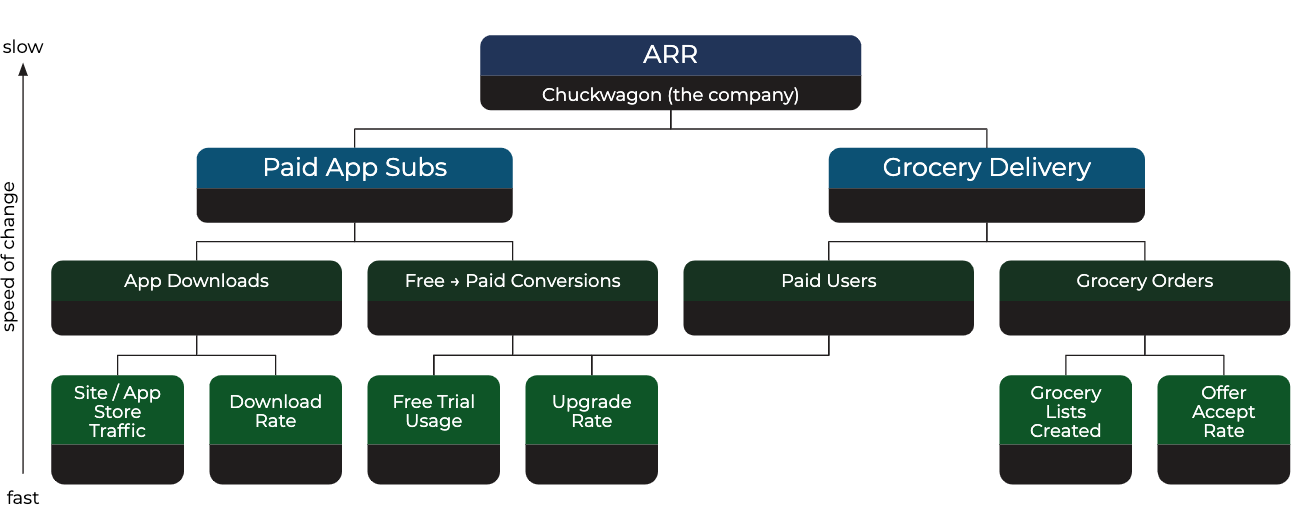
Notice how the bottom row are the KPIs connected to customer behavior - the changes we make there are likely to yield results quickly, helping us understand if we should continue work and invest more time / effort in an early-stage concept we've rolled out to customers.
Crafting a Customer Journey Vision
OK so now we know what metrics matter in creating customer value. We need to create an experience that shrinks the time needed to get a home-cooked meal on the table by 10x. It's clear that the experience needs to reduce the time spent planning, grocery shopping and cooking. After doing some competitive analysis on how people plan their meals, grocery shop and cook at home, we landed on this customer journey vision:
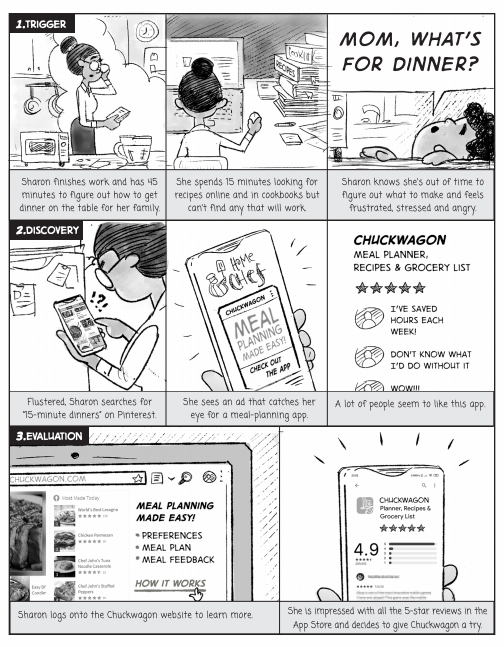
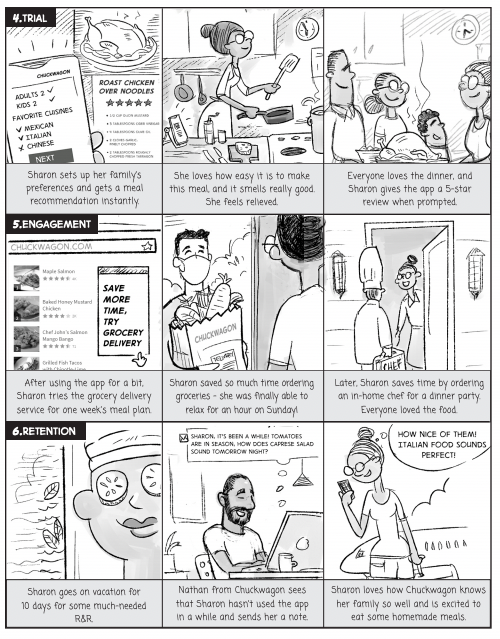
Of course, you can tell we had a designer help with this version. The "wireframe" included graphics from a quick Google image search and some short captions. The reasons we prefer the comic strip format are:
- Highly visual - doesn't take more than a minute to read and can fit on 1 slide when present it to an audience
- Holistic - it covers all the chapters of the customer journey, not just the product experience
- Simple but detailed - it's hard for someone to misinterpret what the vision is, which we've seen happen with written vision statements
Forming a Strategic Plan
OK, so this vision sounds great, but it's not like a small startup can build that entire experience overnight. We're going to have to prioritize the work strategically. Some thoughts we had as we contemplated the strategy:
- It wouldn't make sense to build the grocery delivery service out ourself. We'd need to partner with the likes of Instacart and/or Shipt, but we couldn't just approach them with a few hundred users and ask them to partner with us. We'd need enough users to make it an interesting partnership for them.
- We prefer to bootstrap the company instead of fundraising, so we'll need to figure out a business model that gives us some runway to realize the vision.
- It might be logistically complicated to ask chefs to come into a home to cook any random recipe the customer chose - it'd probably be way more efficient to have chefs learn to cook a finite number of recipes, or maybe have them specialize in certain recipes so it's easier to schedule their routes.
After thinking about all of these and exploring a few strategic options, we came up with this strategic plan:

Putting It All Together
Because we're often asked about how to present vision / strategy / roadmaps, we put together a sample deck pulling all of these artifacts together to explain the plan to employees and external parties like Board members and partners. Here is a slide that summarizes the vision and strategy and calls out some key financial milestones for the company:
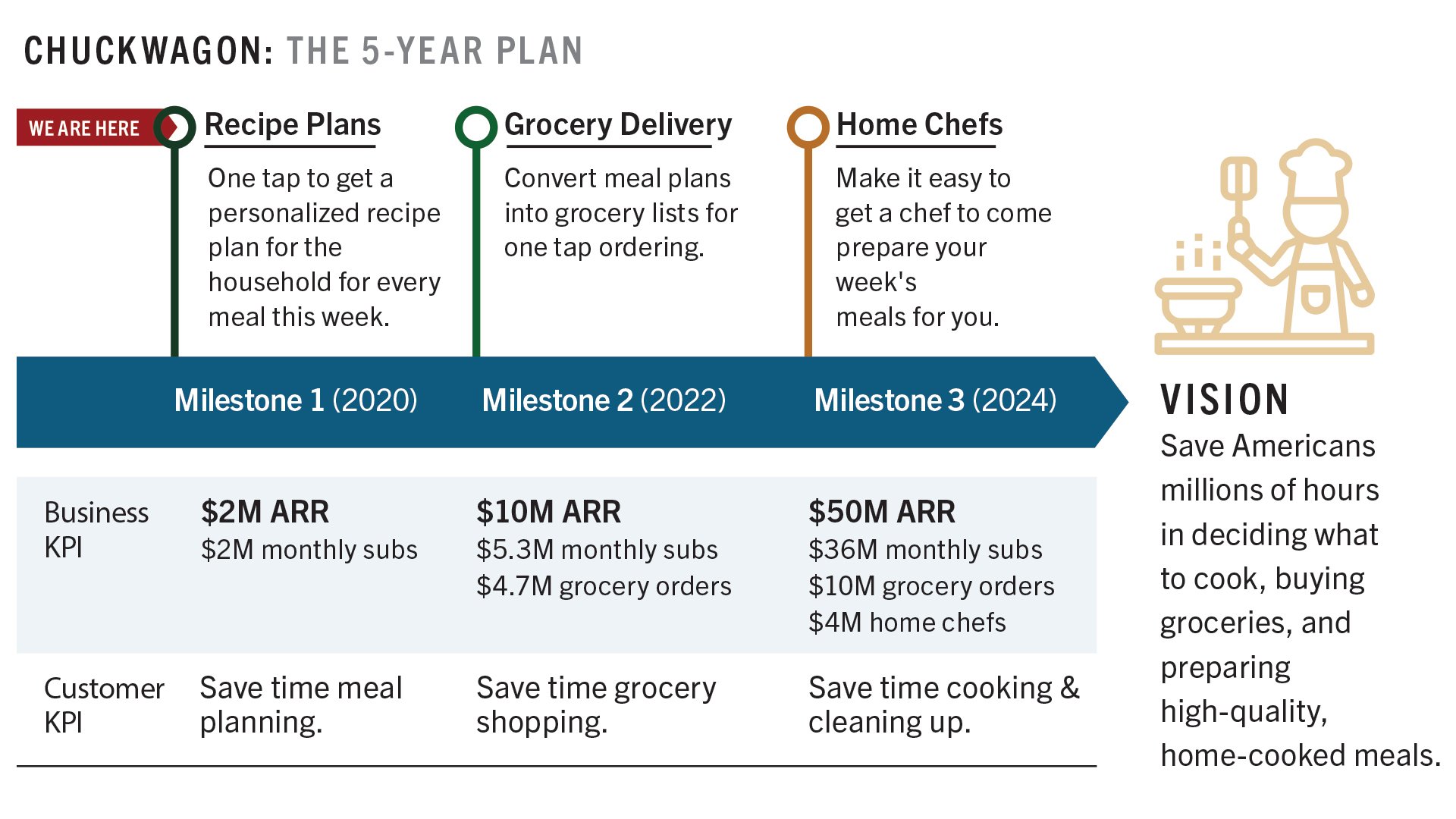
We also created some mockups to supplement the comic strip vision, to make it even more clear what the customer experience would look like with each milestone.
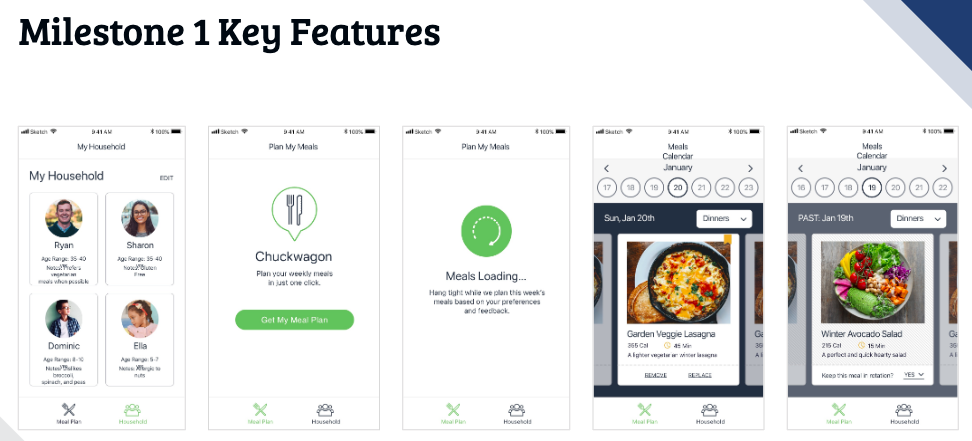
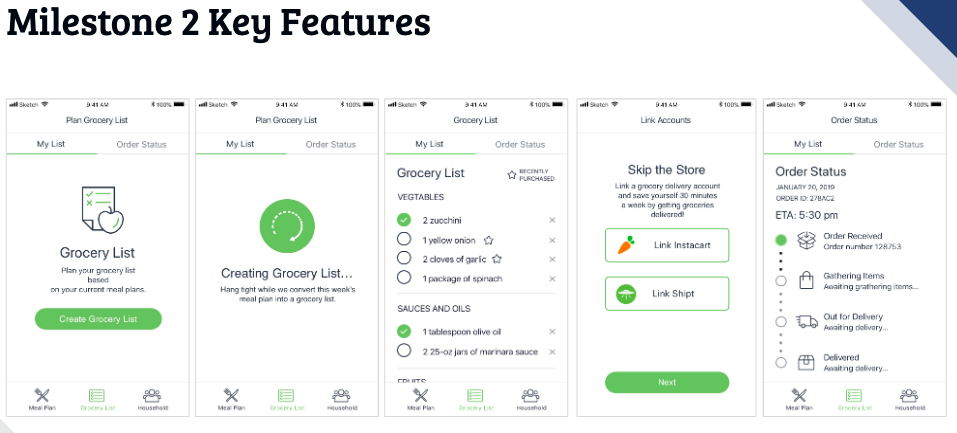
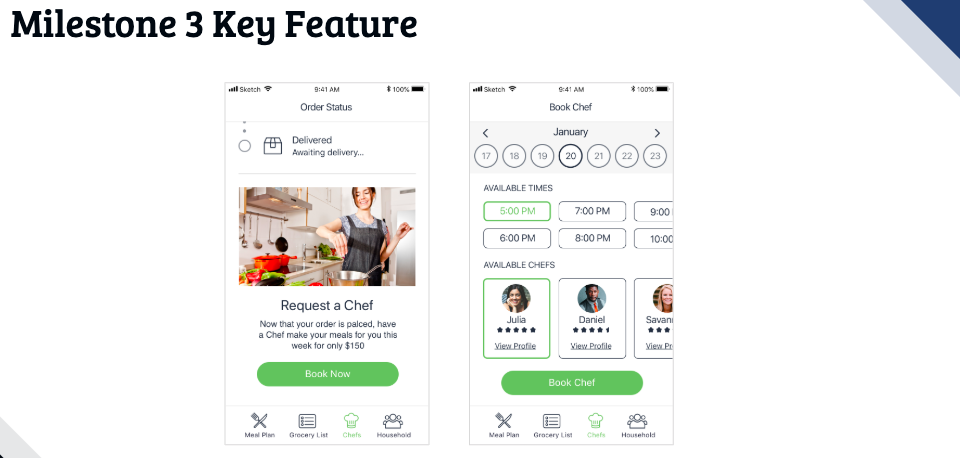
Like the comic strip, we like mockups as a way of conveying the customer journey vision because they're highly visual and simple to understand.
Hopefully this post served to show how we apply Vision-Led Product Management to creating a cohesive strategy for your team to then execute on. Feel free to leave any questions or comments below.
